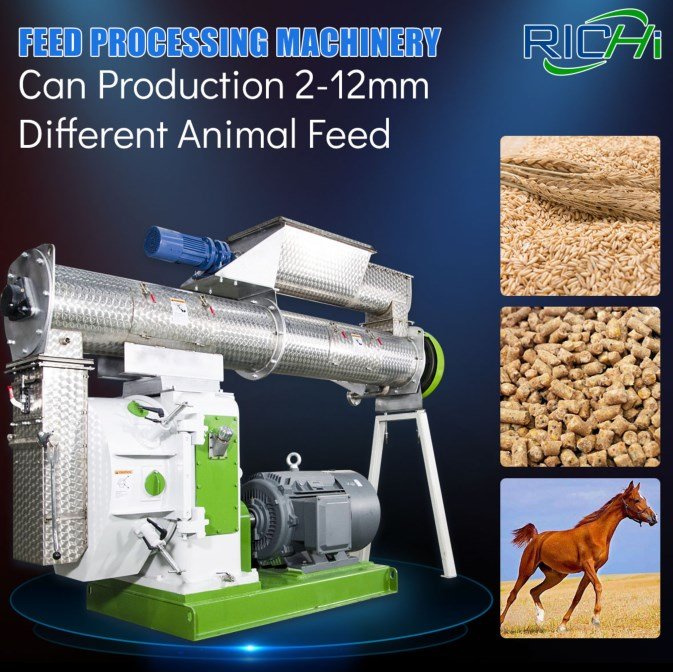Navigating the Cost regarding Animal Feed Pellet Machines: A Comprehensive Guide
In the dynamic entire world of livestock supervision and poultry harvesting, the quest for efficiency and cost-effectiveness in feed generation is never more hitting. With the global concentration on sustainable harvesting practices, animal nourish pellet machines include emerged as being a cornerstone technology, enabling farmers to produce high-quality feed with impressive efficiency. This article delves into typically the critical part of animal feed pellet equipment prices, incorporating industry-specific data and examination to provide a new holistic view associated with investment considerations plus market trends. Market Overview: The Monetary Landscape The global animal feed market place, valued at around USD 400 billion in 2021, is usually projected to experience constant growth, driven simply by the increasing with regard to meat and milk products worldwide. Within pellet mill for feed burgeoning market, the particular role of give pellet machines : devices that switch raw materials like source and proteins directly into compact pellets ~ is now increasingly important. These machines not necessarily only streamline supply production and also lead to enhanced feed quality, leading in order to better livestock well being and productivity. Major Data Points: The price range regarding animal feed pellet machines varies broadly, from as low as $500 for basic models in order to over $30, 1000 for industrial-scale equipment. Factors influencing the cost include the machine's capacity, automation stage, along with the technology it employs. The return on investment (ROI) for these tools can be highly advantageous, with efficiency benefits reducing feed squander by up in order to 20% and bettering feed conversion proportions significantly. Technological Breakthroughs: Impact on Charges Recent advancements found in feed pellet device technology have presented a range of features made to enhance efficiency and ease of use, such as automated control systems, precision giving, and advanced pelletizing technologies. These functions, while adding to the particular initial cost, offer long-term savings plus benefits through decreased labor costs, reduced feed waste, in addition to improved animal growth rates. Analyzing Cost vs. Performance: High-capacity, automated machines represent a larger straight up investment but provide greater long-term financial savings and efficiency regarding large-scale operations. More compact farms might gain more from basic or mid-range choices, balancing the initial cost with the specific needs of their very own operation. Market Tendencies and Cost Factors The market for creature feed pellet equipment is influenced by several global trends, such as the rise regarding sustainable farming techniques, the push with regard to top quality feed, in addition to the growing focus on livestock wellness. As these styles still drive need for feed pellet machines, understanding the components that contribute to their price is vital for farmers and investors. Factors Impacting Machine Price: Capacity and Output: Machines designed for larger output and constant operation are charged higher due in order to their robust construction and advanced features. Material and Build Quality: Durable elements and construction immediately impact the machine's longevity and stability, affecting its expense. Technical Features: Innovations these kinds of as IoT the usage and automated settings add to the particular cost but give efficiency and in business benefits. Making the Proper Investment Buying a great animal feed pellet machine requires consideration of both the initial cost and even the potential ROI. Prospective buyers have to assess their particular needs, including generation scale, desired feed quality, and extensive business goals, in order to select a machine that offers the particular best balance involving price and satisfaction.  The particular price of canine feed pellet machines represents an important consideration for anyone throughout the agricultural field, reflecting a stability between initial purchase and long-term in business benefits. Because the demand for high-quality, lasting feed production continues to grow, understanding the costs landscape of these types of machines is important. Simply by carefully thinking about the components that influence cost and the likelihood of efficiency gains, growers and investors can make informed decisions of which align with their particular operational needs and even financial objectives.
The particular price of canine feed pellet machines represents an important consideration for anyone throughout the agricultural field, reflecting a stability between initial purchase and long-term in business benefits. Because the demand for high-quality, lasting feed production continues to grow, understanding the costs landscape of these types of machines is important. Simply by carefully thinking about the components that influence cost and the likelihood of efficiency gains, growers and investors can make informed decisions of which align with their particular operational needs and even financial objectives.